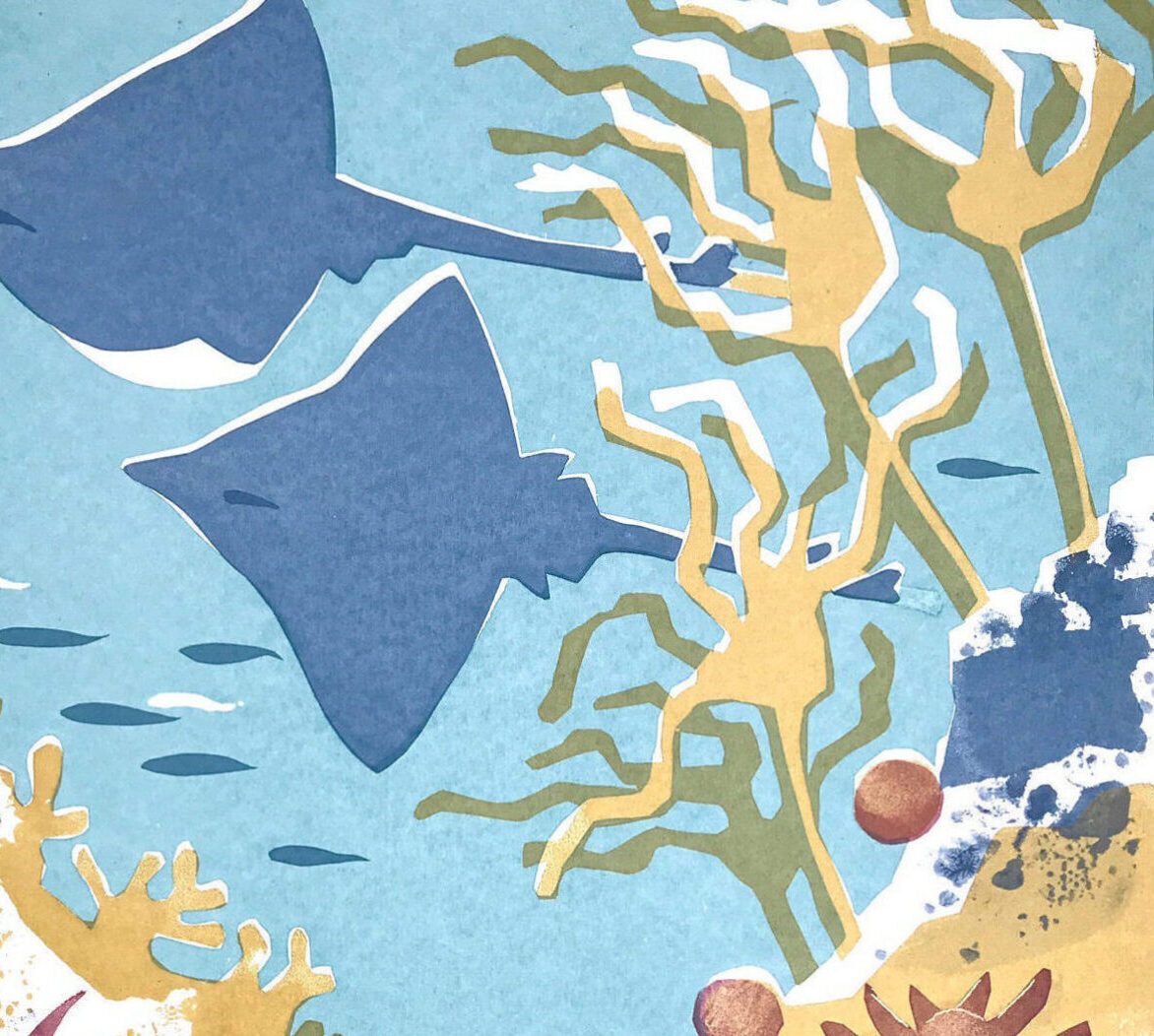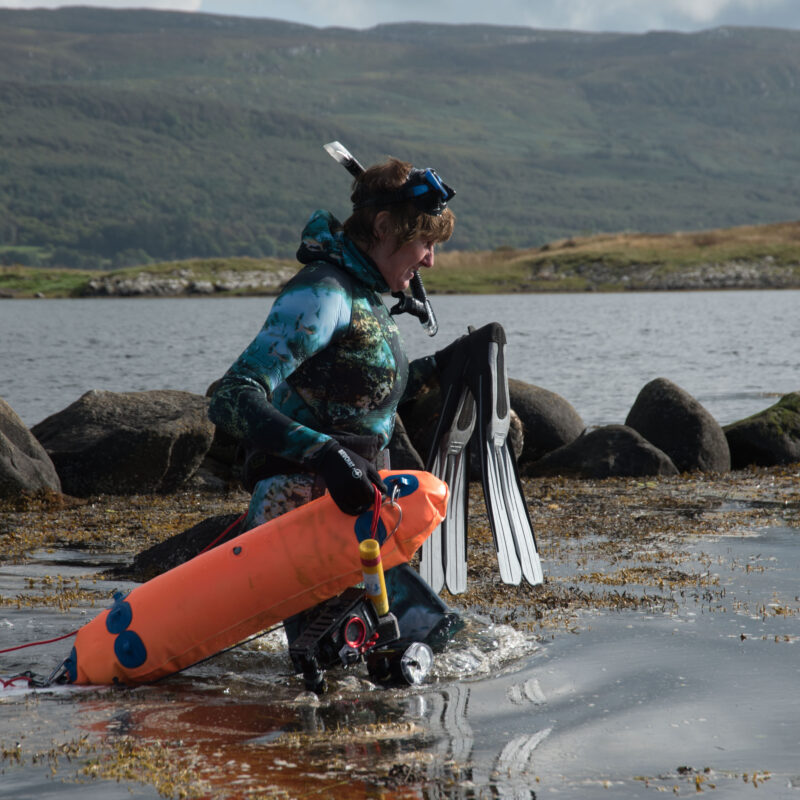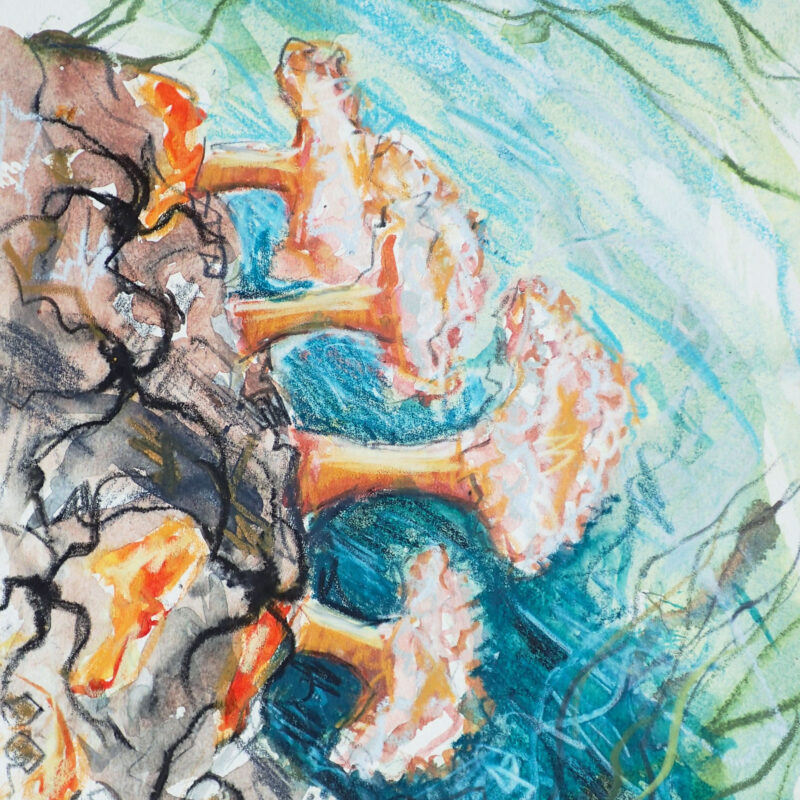Argyll Hope Spot Project

Working as a SWLA wildlife artist is not for the faint hearted. Members work outdoors in all weathers. Sitting on damp ground or numbing rock, stooping to avoid their silhouette showing against the sky, they wait for their subject. When it arrives, they try to capture its moving shape, often from a fleeting view through binoculars or telescope. They might grapple with a paintbrush in cold fingers, or struggle to control drying paint in the hot sun. But years of this sort of commitment, leads to the extraordinary images shown every year at the Natural Eye exhibition in London.

This project however, took the challenge to a new level. The SWLA was approached to help publicise the Argyll Coasts and Islands Hope Spot, the first of its kind in mainland UK. The local community were delighted to be given this international recognition of the quality of their marine life, but then faced a problem. From the shore, the surface of the sea can look uniform, with no clue as to the hidden wealth below. How to inform and engage others with these world-class natural riches? Most people are not able to explore beneath the waves as the water is cold and the currents strong. And so the Society of Wildlife Artists became involved.
Jane Smith, Lottie Goodlet guide, Harriet Mead, Louise Scammell, Chris Rose and Bruce Pearson prepare to go snorkelling.
Many of our members have experience of drawing under water, thanks to diving bursaries provided by the Wildlife Trusts. In July and September this year two groups of artists visited Argyll. They were overwhelmed by the variety of marine life that they encountered, but also by the scale of the task. All the normal rules of fieldwork were turned upside down, sometimes quite literally. Even before entering the water they struggled, pulling on multiple layers of neoprene. Once submerged they experimented with weight belts to keep themselves stable and learned how to stop their masks steaming up. They practiced the best way to carry a drawing board whilst leaving hands free for swimming, how to stop pencils floating away and how to prevent paper disintegrating in the water.
All the artists wanted to stay in longer than the cold water allowed, because there was so much to see. Louise Scammell, an experienced diver in the seas off the south-west of the UK said: “The richness and diversity of the underwater life here is extraordinary. I’ve not seen anything like it anywhere else.”
Fieldwork from the two trips will be on show at the Society’s 2021 Natural Eye exhibition in London. If you’d like to find out more about the Argyll Hope Spot, visit their website, follow them on social media or use the QR code below. To find out more about The Wildlife Trusts Undersea Art Award (Diving Bursaries) click here.















